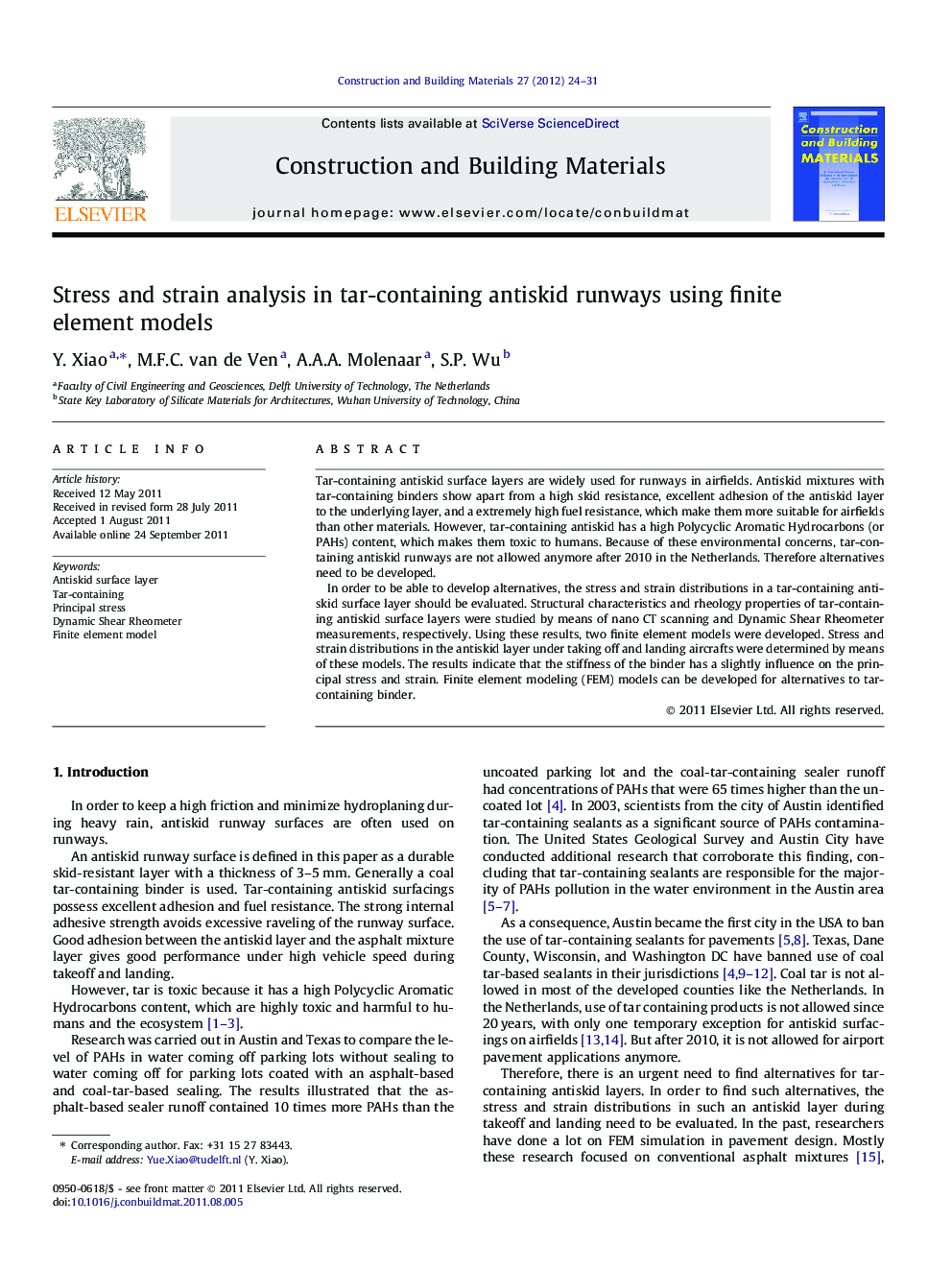| Article ID | Journal | Published Year | Pages | File Type |
|---|---|---|---|---|
| 259325 | Construction and Building Materials | 2012 | 8 Pages |
Tar-containing antiskid surface layers are widely used for runways in airfields. Antiskid mixtures with tar-containing binders show apart from a high skid resistance, excellent adhesion of the antiskid layer to the underlying layer, and a extremely high fuel resistance, which make them more suitable for airfields than other materials. However, tar-containing antiskid has a high Polycyclic Aromatic Hydrocarbons (or PAHs) content, which makes them toxic to humans. Because of these environmental concerns, tar-containing antiskid runways are not allowed anymore after 2010 in the Netherlands. Therefore alternatives need to be developed.In order to be able to develop alternatives, the stress and strain distributions in a tar-containing antiskid surface layer should be evaluated. Structural characteristics and rheology properties of tar-containing antiskid surface layers were studied by means of nano CT scanning and Dynamic Shear Rheometer measurements, respectively. Using these results, two finite element models were developed. Stress and strain distributions in the antiskid layer under taking off and landing aircrafts were determined by means of these models. The results indicate that the stiffness of the binder has a slightly influence on the principal stress and strain. Finite element modeling (FEM) models can be developed for alternatives to tar-containing binder.
► 2D models were developed to select alternatives for antiskid surface layer. ► Stiffness of binder has slightly influence on principal stresses. ► Stiffness of binder has a huge effect on principal strains. ► The research gives a guideline to determine the performance of alternatives.
